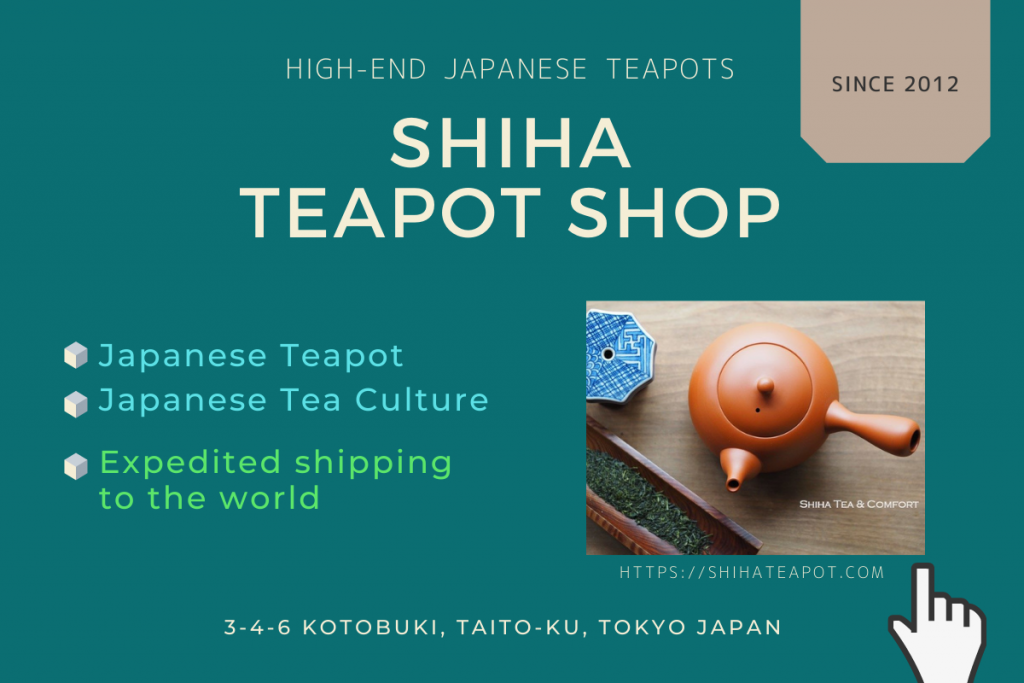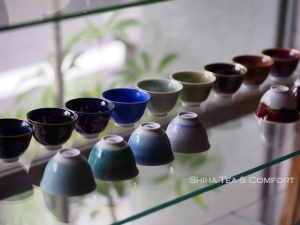What is Tokoname Kyusu Teapot? What is special? How do they look? (Tokonameyaki)
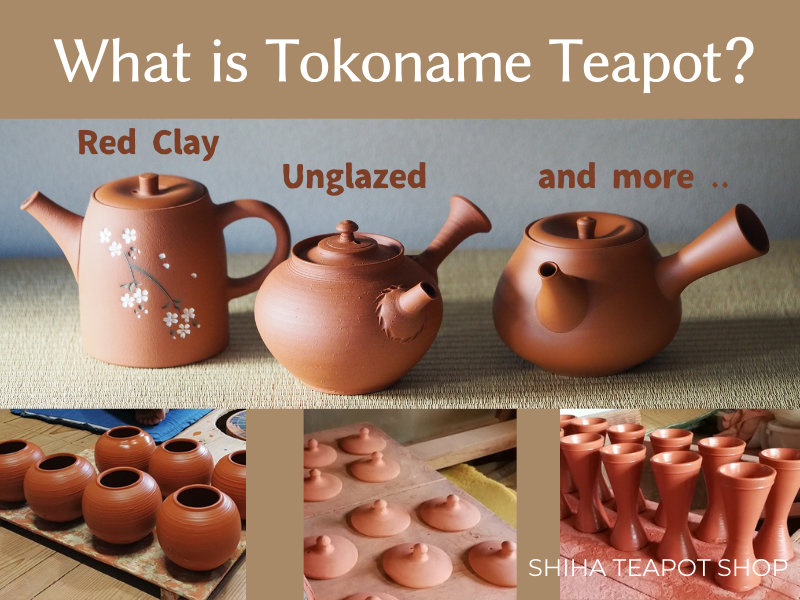
Hello! We are SHIHA TEAPOT SHOP in Tokyo Japan. We introduce you Tokoname Teapots in this blog.
SHIHA TEAPOT SHOP Online Store: https://shihateapot.com
Contents 目次
- “Kyusu” is Teapot
- Where you can buy Tokoname Teapot
- What is Tokoname?
- The Art of Tokoname Teapot
- Portfolio of Tokoname Kyusu Teapot Masters Works
- The Reason to Buy Tokoname Teapot
- Taste of Tea Richer and Round / Water and tea fuse together nicely
- User Review for Tokoname Teapot
- Typical Tokoname Teapot
- Tokoname Teapots are “Unglazed” “Stoneware”
- History of Tokoname and Teapot
- Technique and Tradition of Tokoname Teapot
- Handmade Filter / Strainer – Tokoname Teapot
- Lid and Body are Perfectly Fit- Tokoname Teapot
- Styles of Teapot – Tokoname Teapot
- Teapot Artists in Tokoname
- All Handmade by an Artist?
- About “Traditional Craft Man”
- Tokoname Teapot-Making Techniques as “Intangible Cultural Properties” of Japan
- Recommendation: Grab if you find one you like!
“Kyusu” is Teapot
“Kyusu (急須)” means teapot in Japanese. “Yaki” literally means “fired” and its meaning is “fired ceramic”. Tokoname-yaki means “Tokoname ware” or “Tokoname ceramic”.
Tokoname Teapot is also called Tokonamyaki Teapot or Tokonameyaki Kyusu.
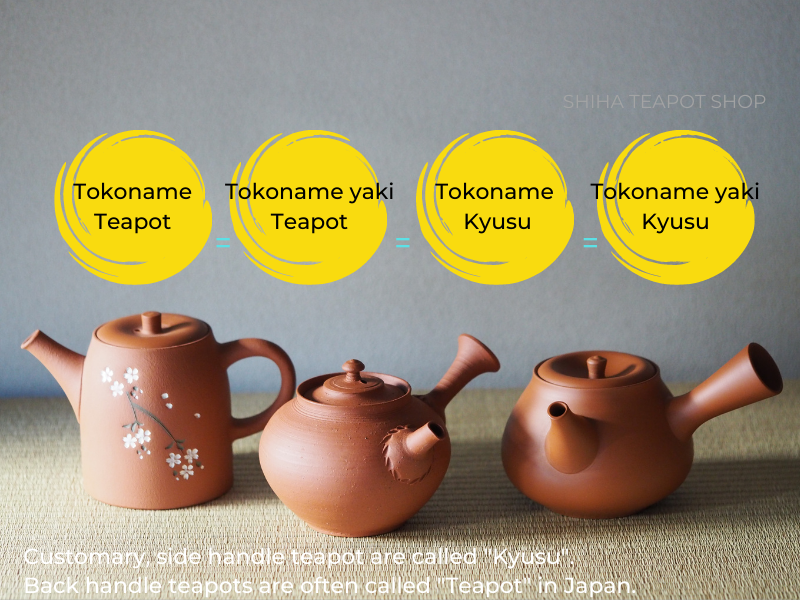
Customary, side handle teapot are called “Kyusu”. Back handle teapots are often called “Teapot” in Japan.
Pronunciation of Kyu is the same as “cue” or “queue” of English.
Where you can buy Tokoname Teapot
We sell Tokoname teapots. Please visit our shop after you read this blog.
SHIHA TEAPOT SHOP Online Store: https://shihateapot.com

What is Tokoname?
“Tokoname (常滑)” is a name of town (city) in Aichi prefecture in Japan. It is one of the oldest pottery town in Japan.
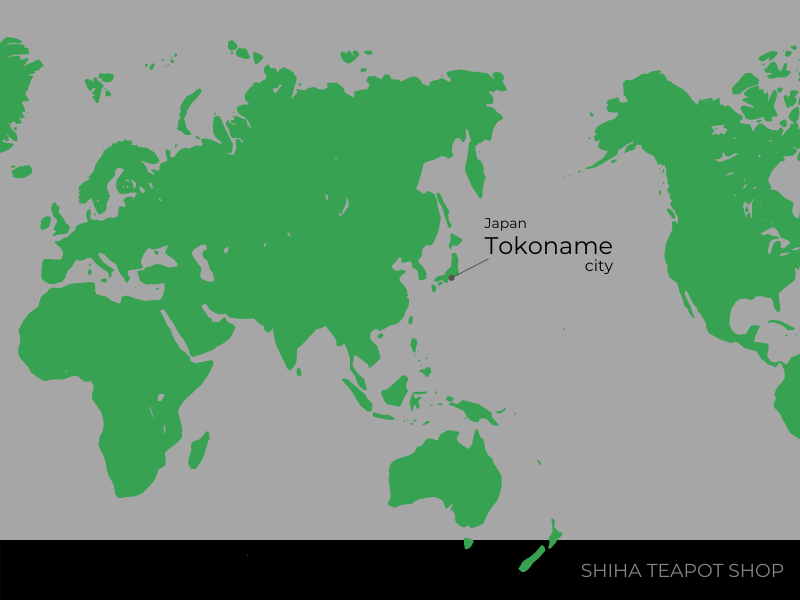
In Japan, there are many ceramic towns. Tokoname is one of them. The characteristic of Tokoname town is that it mainly produces teapots. Many teapot artists have studio there. They produce only/mainly teapots. It is similar to Yixing city in China that is famous for teapot town.
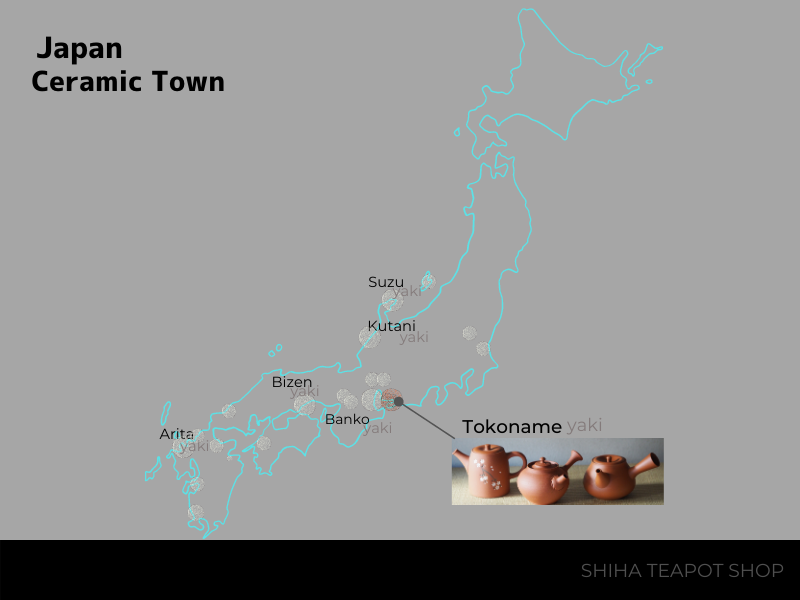
The Art of Tokoname Teapot
Tokoname teapots are made with great care for each parts of teapot by teapot artists, and the techniques and designs are passed down from generation to generation. While the techniques and patterns are preserved, the inspiration of the artists of the time is incorporated with new ideas and art, creating new beauty.
We made a video of teapots of each Tokoname teapot artist. Please enjoy the beauty and creativity of the the each aritsts. (YouTube Playlist) We will add more artists.
Portfolio of Tokoname Kyusu Teapot Masters Works
Here, you can find the unique works of Tokoname teapots, artist by artist. You will discover the diversity and craftsmanship of Tokoname teapots.
Online Store Tokoname Teapot :
https://shihateapot.com/collections/tokoname-teapot
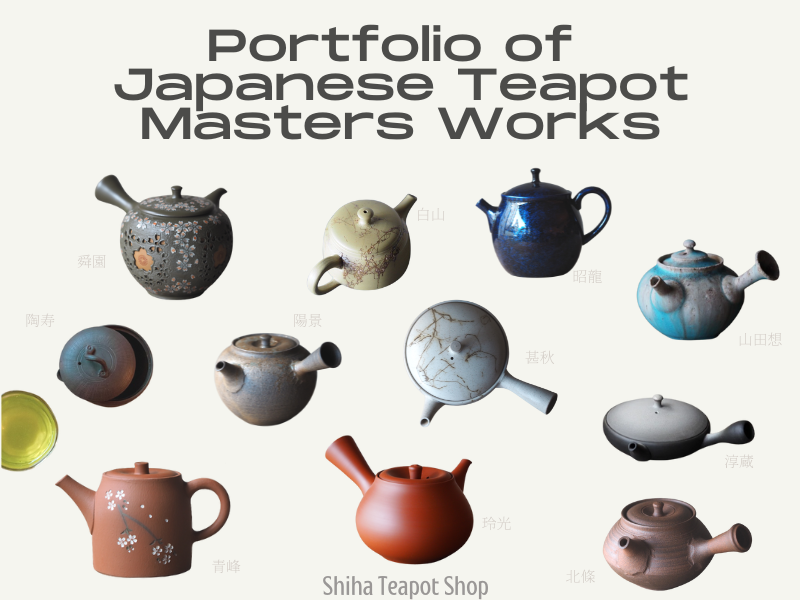
The Reason to Buy Tokoname Teapot
Especially high-end Tokoname Teapots;
- Safe Material (Clay)
- Unglazed ( Good effect to taste & texture of tea)
- High Functionality to brew tea (Water flow, perfect lid fit, light in weight etc)
- Harmony of Function & Art ( It brings a joy having it on your table)
- Traditional & Beautiful (Value for collection)
There are some other reasons but those are very important factors to brew tea. Tokoname is a teapot town. Technique of making teapots are inherited from masters to the artists in next generations. And also teapot artists in Tokoname are continuously sharing and competing their technique to make high functionality teapots.
There is no worry to buy a Tokoname teapot at online shop, because basically there is no problem in function and material. “Tokoname Teapot” is a brand to give you sense of security for brewing tea. (As long as it is genuine Tokoname Teapot )
As a teapot seller, I am confident for the safety & and functionality for the teapots we sell. Our teapots collections are made by teapots artists who have been making teapots for some decades. Their teapot give you comfortable brewing.
Taste of Tea Richer and Round / Water and tea fuse together nicely
Unglazed means that tea and water touch to the clay in a teapot.
It has effect of reduce astringency and make taste of tea richer and round, especially for Japanese green tea. And water and tea fuse together nicely for most of tea. Texture of tea get smoother.
Some Teapots, like Shoryu Tenmoku Teapot as below, outside is glazed, inside is not glazed. This case, tea touches to the clay and make good effect to the taste.
Please pay attention to the glazing (inside) when you select teapots.
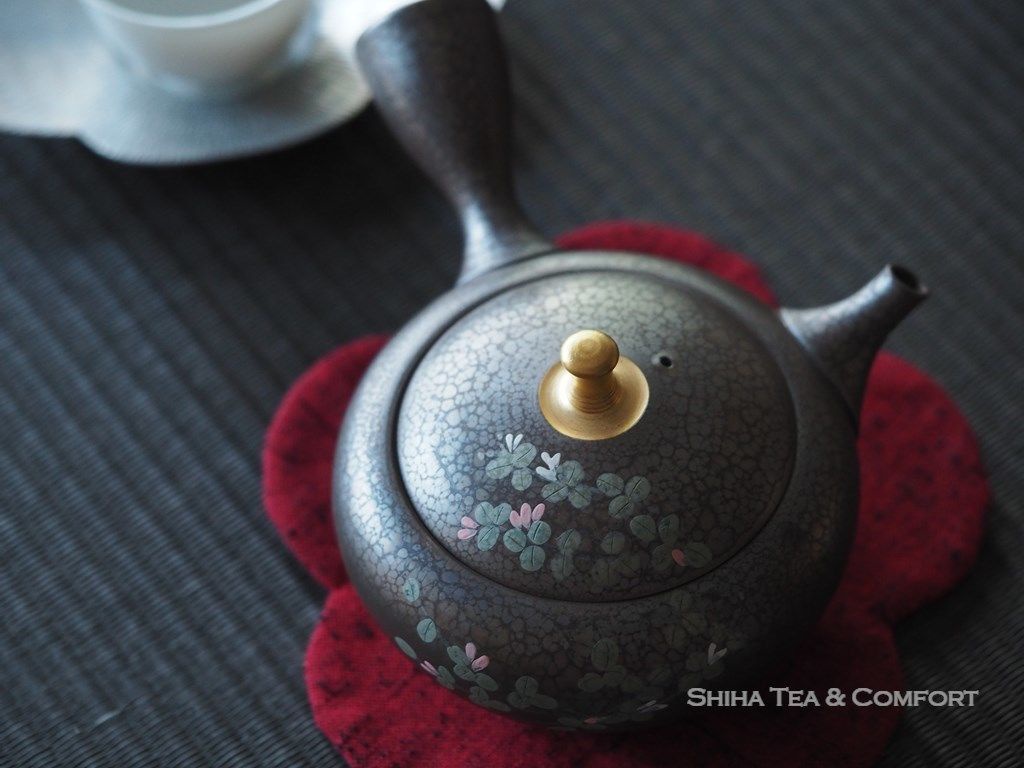
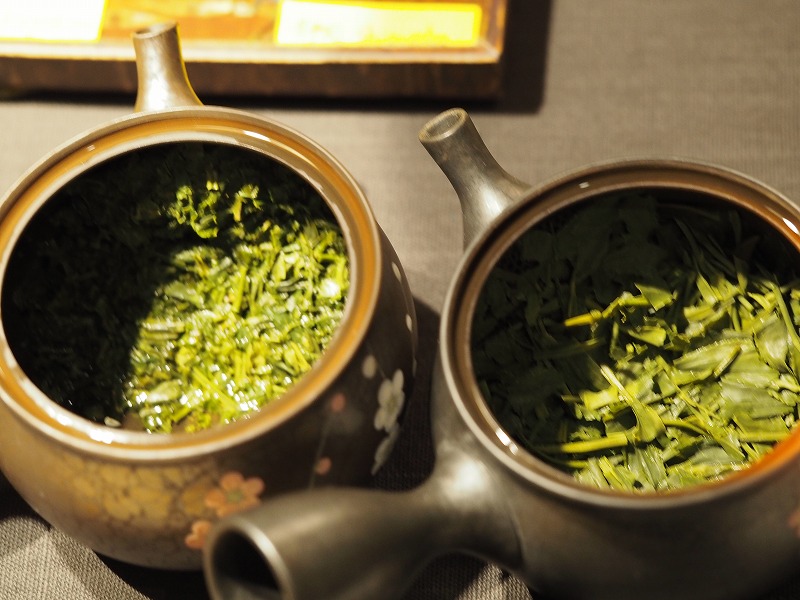
A customer in United states send us comment for Tokoname teapot as follows.
This beautiful pot makes brewing the best tasting tea very easy!
Just the right amount of tea bits get through the filter to make the tea fresh and flavorful. (View whole message)
You can see customer review for Tokoname teapot at our store.
Brewing Japanese green tea with Tokoname teapot is so much different from brewing glass-made teapot or glazed teapot. Japanese people know it by experience.
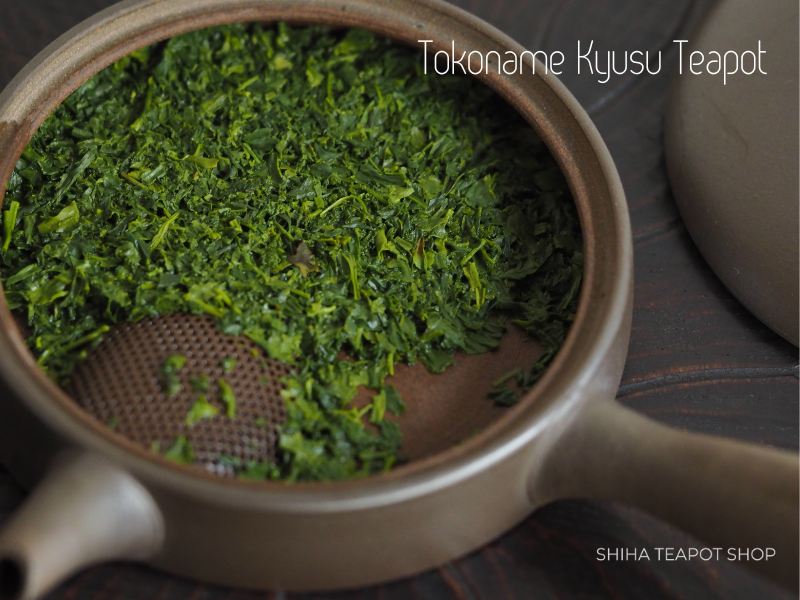
Tokoname Teapot artists use many type of clay besides red clay recent decades keeping traditional teapot making technique. They keep “unglazed”,”inside-unglazed” for good effect for tea taste.
User Review for Tokoname Teapot
You can see how user enjoy beauty and function of Tokoname teapots in the following page. (It is SHIHA TEAPOT SHOP Customer review page)
https://shihateapot.com/pages/customer-blogfwal

Typical Tokoname Teapot
Red clay teapots are typical and traditional Tokoname teapots. Tokoname clay contains a lot of iron and turns red after firing.
Delicate hand carving art on teapots are also well known.

Nowadays, many artists in Tokoname also use other type of clay, it is diversified. Teapots made in Tokoname even with other type of clay are called Tokoname Teapot customary.

Tokoname Teapots are “Unglazed” “Stoneware”
Tokoname teapots are unglazed and it is categorized as stoneware. (They are not earthenware. Tokomane teapots are fired 2012F /1100C or higher.) Because they are unglazed, the clay gives certain effect to taste and texture of tea. Benefit of the Tokoname clay is explained in another chapter below.
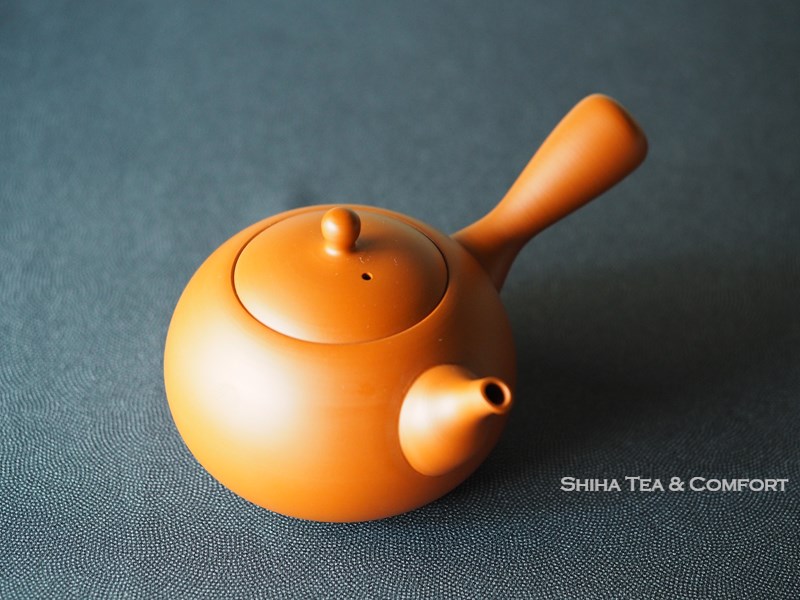
Please note that in recent decades some artists use glaze on outer surface for art as seen photo below. Inside is not glazed basically.
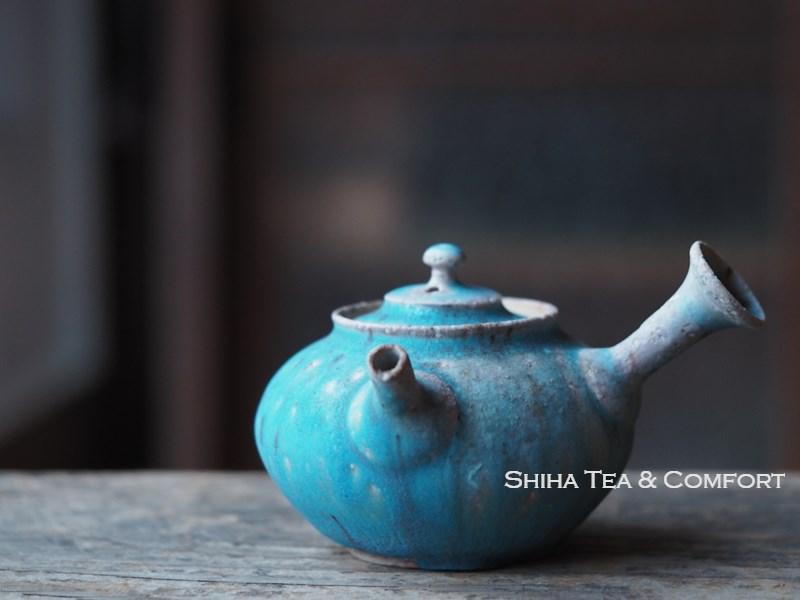
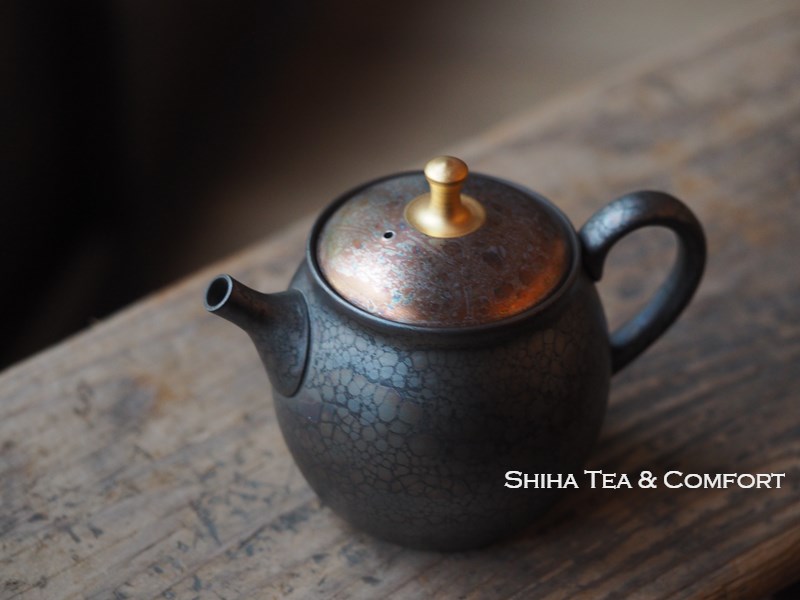
(Some lower price teapots may be glazed inside and outside. (and often they have stainless filters) )
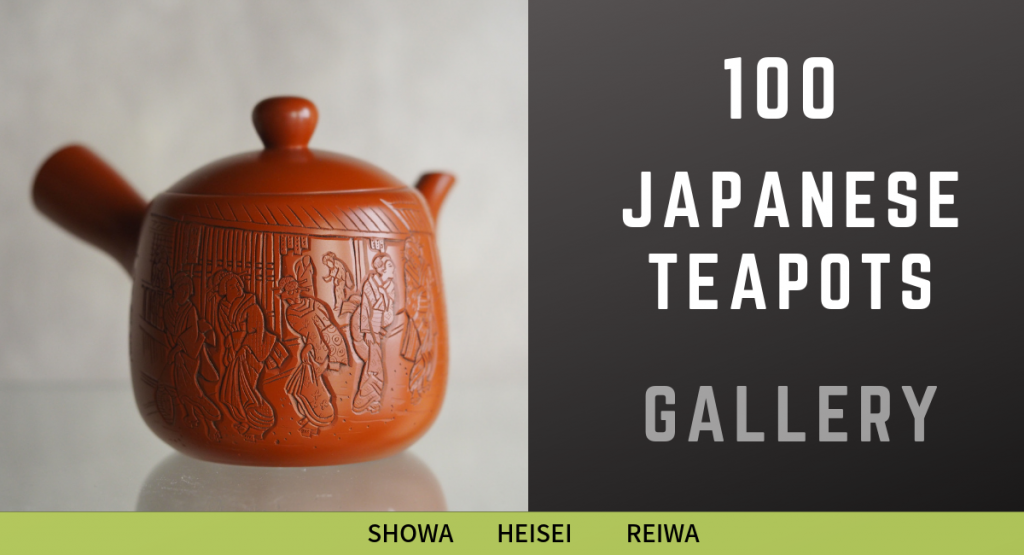
Tokoname Teapot page at shop: https://shihateapot.com/collections/tokoname-teapot
History of Tokoname and Teapot
First Tokoname-yaki (Tokoname ware) were produced in 12th century. Tokoname is one of the “Japan’s Six Old Kilns” and it is the oldest. There are about 3000 ruins of kiln in the area of Tokoname and surroundings.
Old time of Tokoname has good clay and mountains which provide plenty of firewood. And Tokoname is facing to sea. Those were important factors as pottery production and to export(carry) them to other area of Japan to sell.
At that time, Tokoname produced large storage jars, bowls and dishes for daily use mainly. Religious related ware were also made.
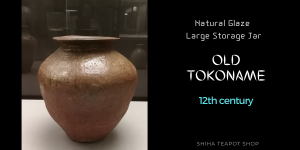
In 19th century, products were diversified. Tokoname started producing pottery pipe, flower pot, tiles, brazier, and teapots.
About teapots, seaweed teapots (mogake) and white clay teapots were produced prior to red clay teapots in history. Seaweed teapots are unique and only seen in Tokoname (Tokoname is facing to the sea)
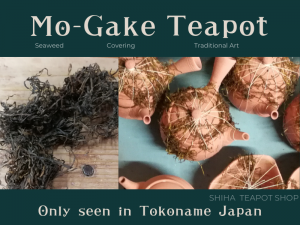
Due to change of life style and industrialization progresses, since Mid 20th century, pottery pipe, tiles, brazier were no longer made so much. Instead, teapots become main products of Tokoname.
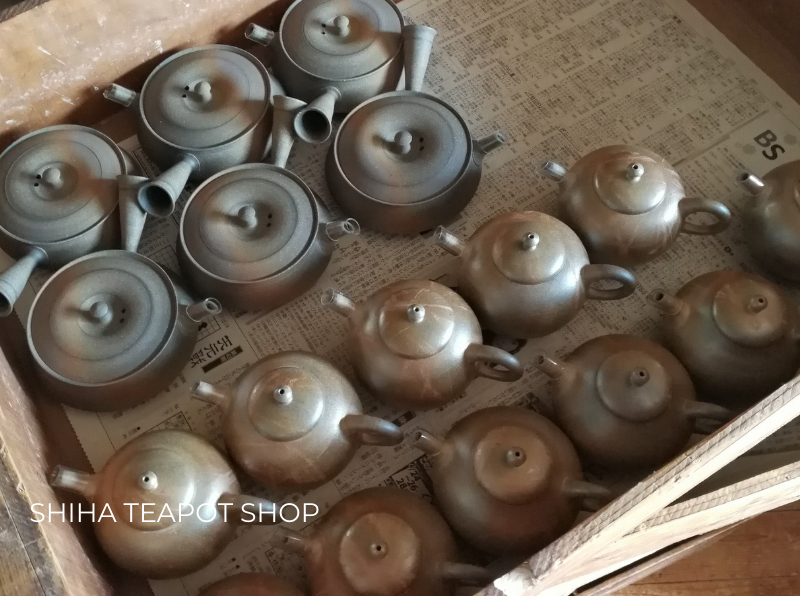
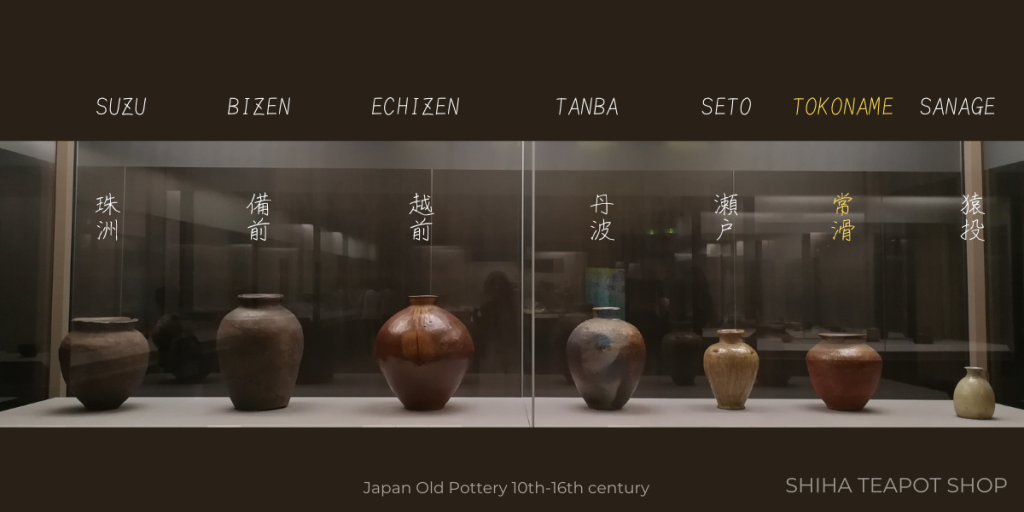
The photo above is old Tokoname Large Jar (12th century) at Tokyo National Museum. (more photos)

Technique and Tradition of Tokoname Teapot
As I have explained ealier, teapot artists and studios in Tokoname have very high technique of making teapots, which is good water flow, light body, nice griping..etc. They are teapot professional.
Those technique and traditional value of quality have been inherited in Tokoname. Function of Tokoname teapots are quite guaranteed (This is my personal opinion based on the comparison of thousands of teapots)
Tokoname Teapot is Japan’s official “Traditional Craft” certified by the Japanese Government (Ministry of Economy, Trade and Industry).
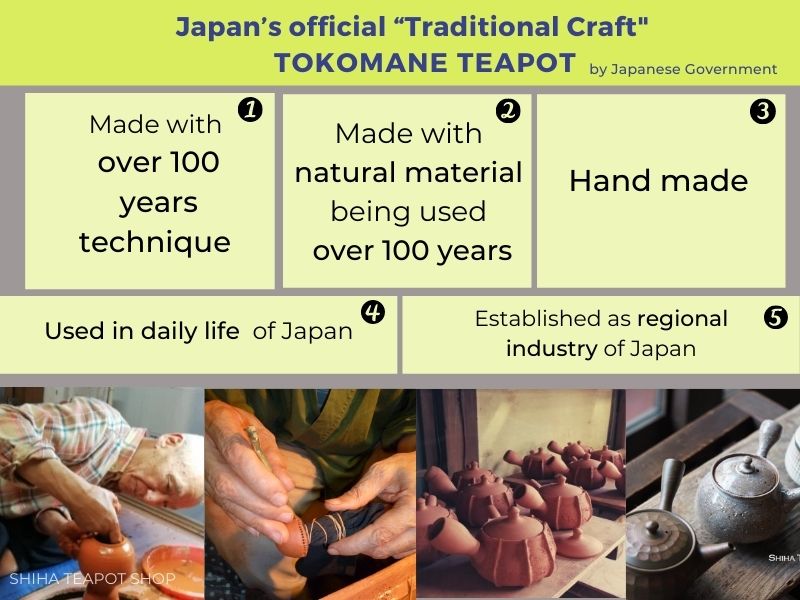
Handmade Filter / Strainer – Tokoname Teapot
Most of high-end Tokoname teapots have handmade filters. Holes of filters are made by artist one by one. Material (clay) is the same as teapot body.
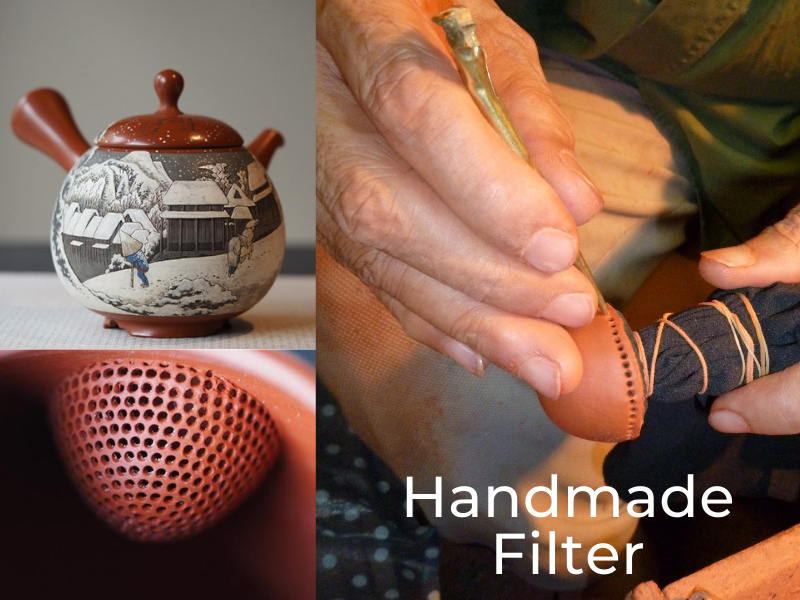
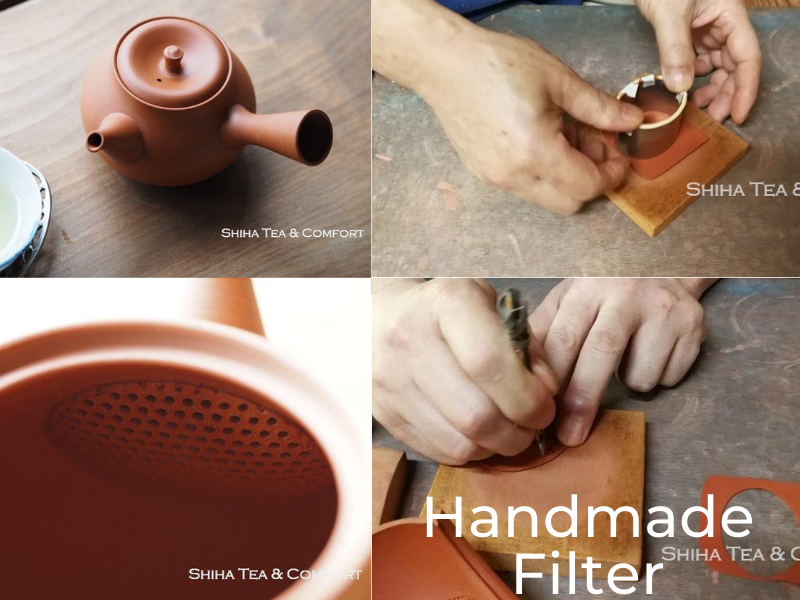
See Yoshikawa Setsudo Teapot at online shop
See Koie Hiroshi (Reiko) Teapot at online shop
There is a half-handmade filiter. Shape of filer is made by the artist, and holes are made by using a tool (puncher).
The puncher had been invented by a potter in Tokoname some decades ago. The filter made with the pucher are called Ceramesh or Sasame.

Lid and Body are Perfectly Fit- Tokoname Teapot
Every tokoname teapots has a lid which fit to the body perfectly. No gap between lid and opening of the body.
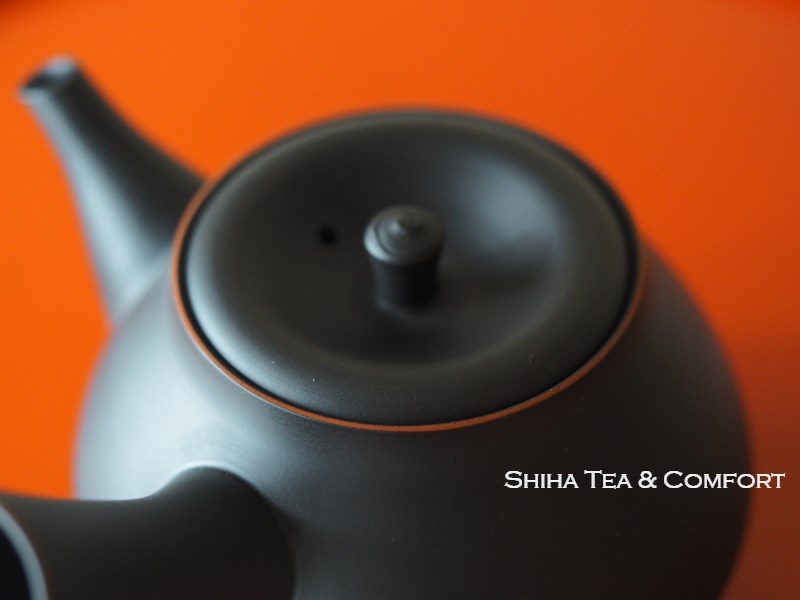
Because lids size are first made bigger and then adjusted after firing in “paring” process.
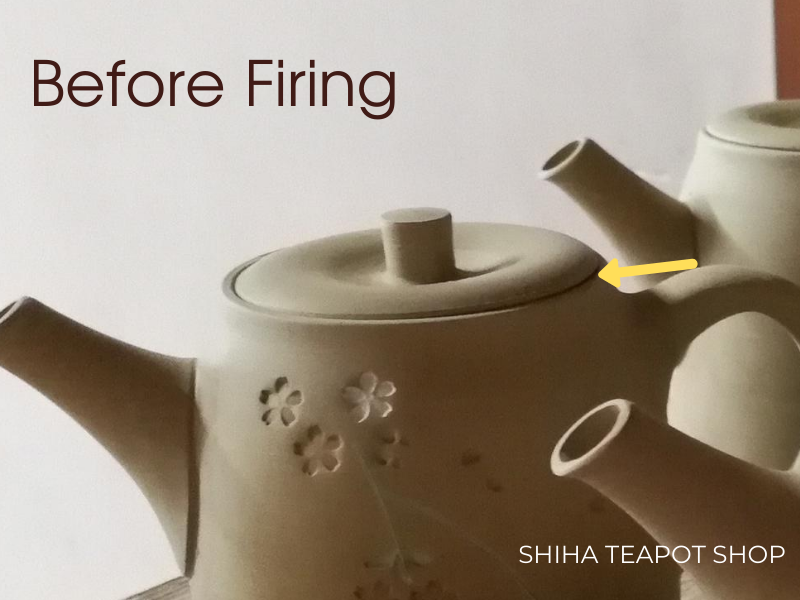
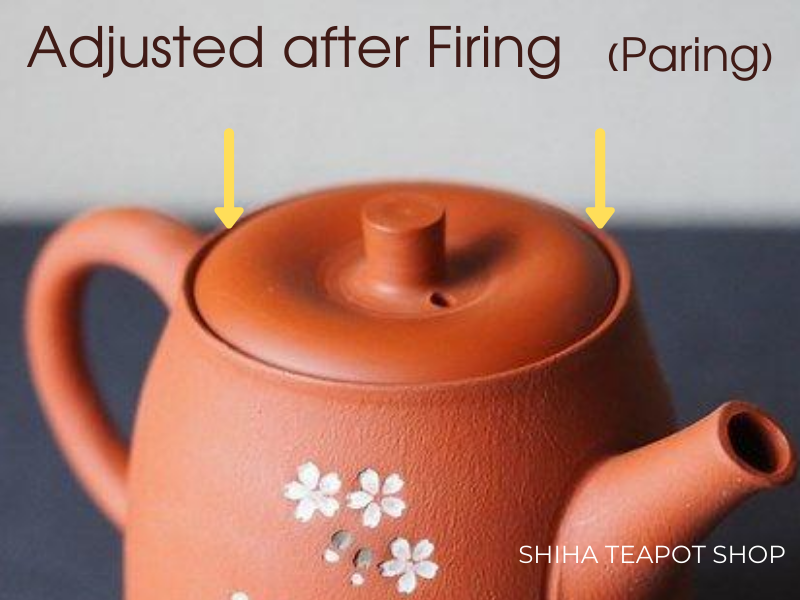
After firing, there is “Pairing” process to make lid size fit to body. In local expression in Tokoname and Banko, it is called “Lid Matching “ (photo: Banko Teapot)

For details about Tokoname teapot lid, please see out blog.
Styles of Teapot – Tokoname Teapot
Most of Tokoname teapots are side-handled teapot as most of Japanese teapots are side-handled.
There are also back-handled, top-handled.
Houhin and Shiboridashi (Shibo) have no handle.
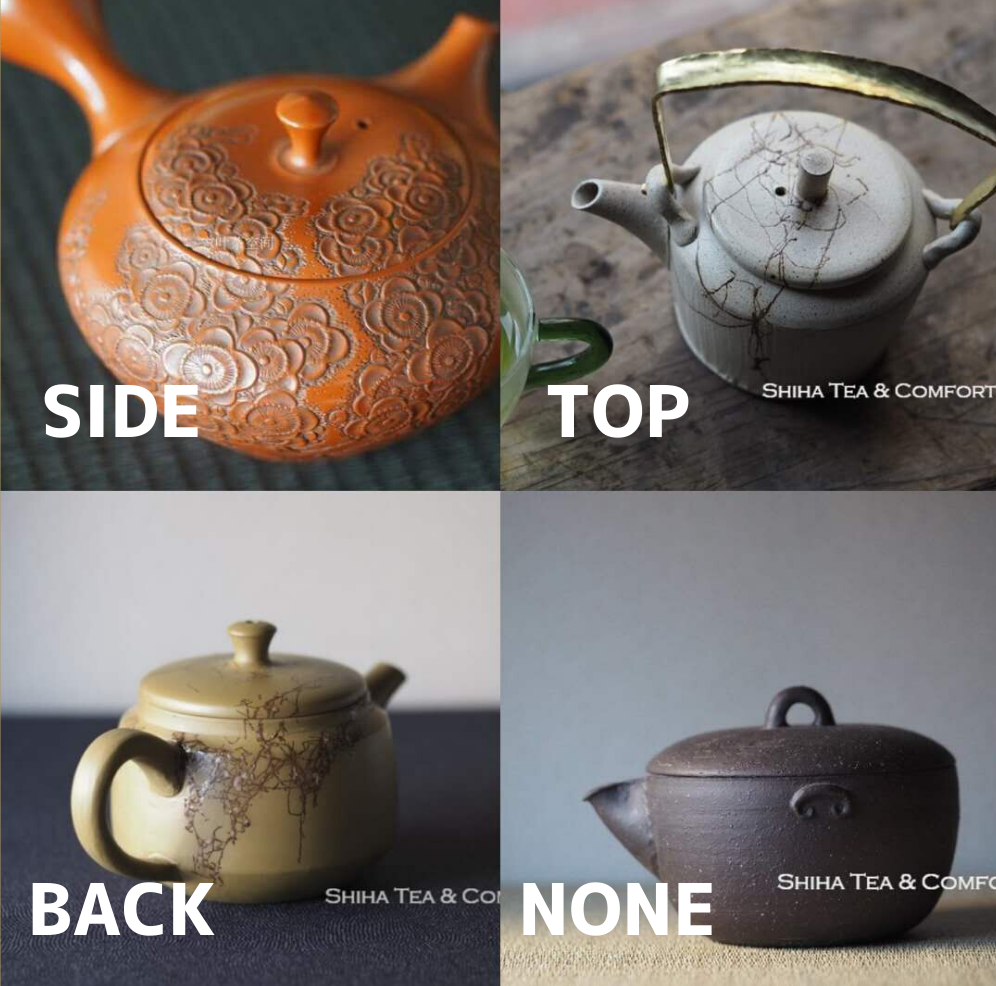
Please refer our blog about Japanese teapot which is categorized by position of handle.
https://shihateacomfort.com/type-and-shape-of-japanese-teapots/

Teapot Artists in Tokoname
Tokoname is pottery teapot town. Some artists in Tokoname only make teapots.
Although they sometime make tea cups, but mainly, mostly make teapots. Especially artists born in 1930s, 1940s, 1950s have been making only teapots through their pottery life.
The photos below are Tokoname teapot artists born in 1930s, 1940s, 1950s. We carry their teapots.
(There are some other teapot artists, too.)






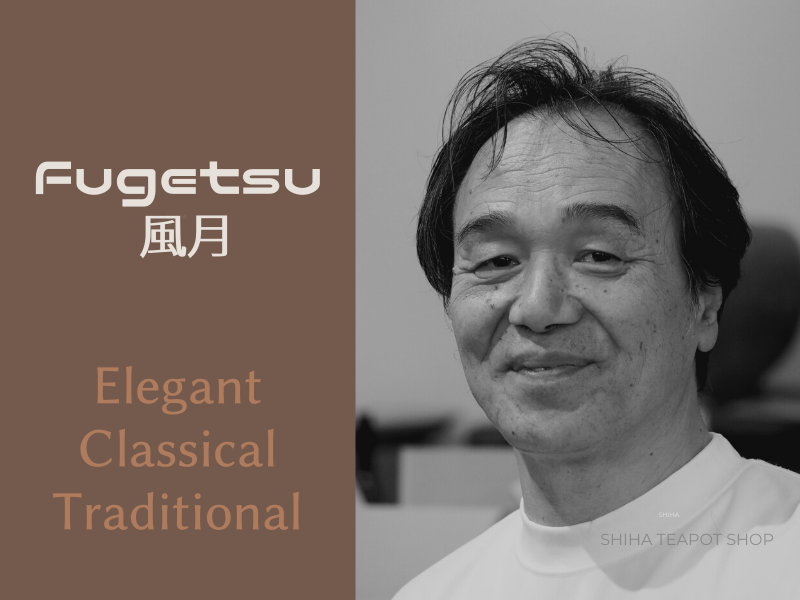
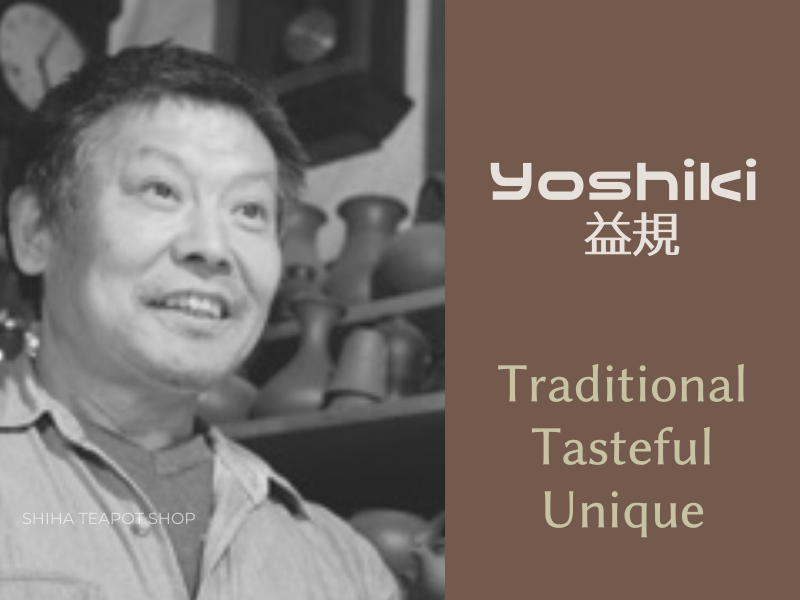
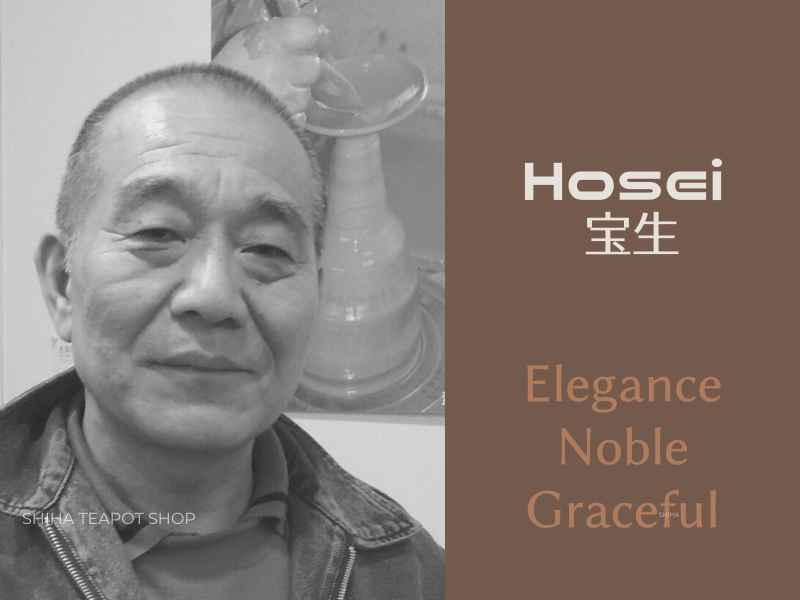

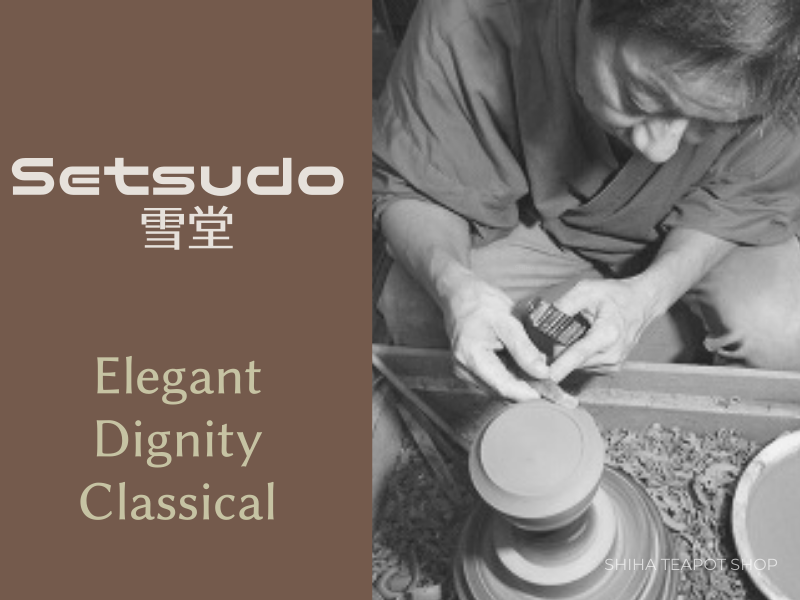



Those who are making teapots longer than 50 years have so much techniques and skills to create teapots as you can imagine.
They fully consider about function of teapots and put their all techniques into a teapot they make. Water flow is good, water stopping is good, lid fits body well, comfortable in your hand etc.
Teapots they produced are widely used in Japan in last 50 years and contribute to develop beautiful Japanese Tea culture.
And also their teapots support Japanese people’s health (physicals and metals) through tea time.
Please watch the details of our teapots at online shop carefully. Photo also shows the quality.
Of course artists in younger generation also have high techniques. Their teapots must have new beauty in tradition.
All Handmade by an Artist?
Most of teapot artist in Tokoname (at least teapot artists of our collection) make teapots by himself alone.
Some are made with family members.
Most of the artists don’t have big factory. They make teapots at small studio (workshop).
In those cases, most of process are done by himself or/and his family members.
The process is; clay selection, purification, design, forming, carving (some artist), kiln adjustment, firing, polishing, lid adjustment .. all done by the artist.
It means that ;
- Artist himself control quality at every steps
- Making process is longer than mold-made teapots
- Production volume is not big
- Teapot users can “feel the artist” in every details and in whole teapot.
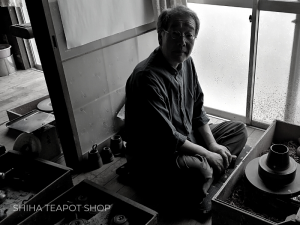
About “Traditional Craft Man”
As explained in the above Chapter, Japanese government has ”Traditional Craft” certification system for traditional craft made in Japan.
Also, the government has certification system for person(aritists and artizans) who have traditional craft techniques.
They are called “Traditional craft man” .
Many of Tokoname teapots in our collection are made by artists certified as “Traditional craft man” .
They are making teapot for some decades, some are more than 50 years. They are teapot professionals 👑
Beauty and perfect functions come from their long years experience and technique.
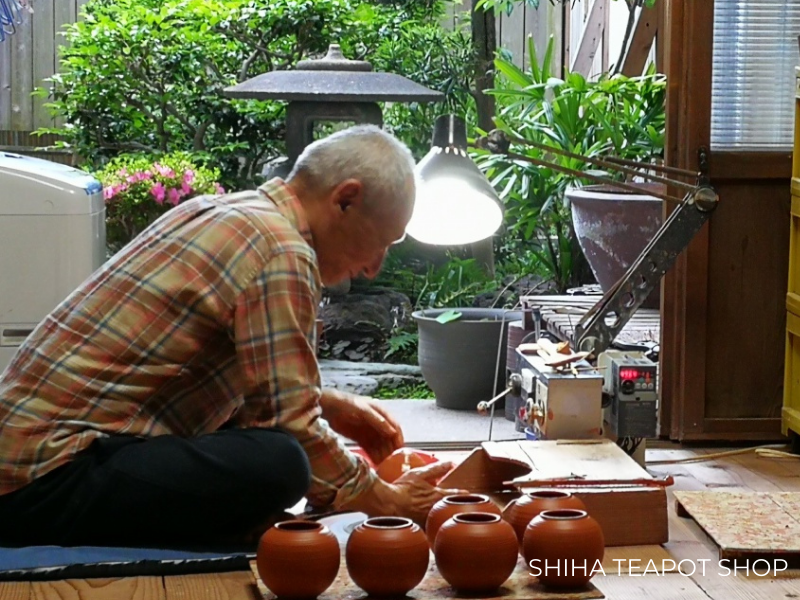
Tokoname Teapot-Making Techniques as “Intangible Cultural Properties” of Japan
Please refer our article
https://shihateapot.com/blogs/news/intangible-cultural-properties
Recommendation: Grab if you find one you like!
If you find a Tokoname teapot you like, we recommend to buy it soon. we have seen many cases that production of nice teapots suddenly discontinued for several reasons. You see the fact that some of popular models from 5 -10 years ago are no longer obtainable.
Online Store: https://shihateapot.com
Online Store: https://shihateacomfort.shop
If you have questions about teapots, feel free to send us message. We introduce information in our blog.

